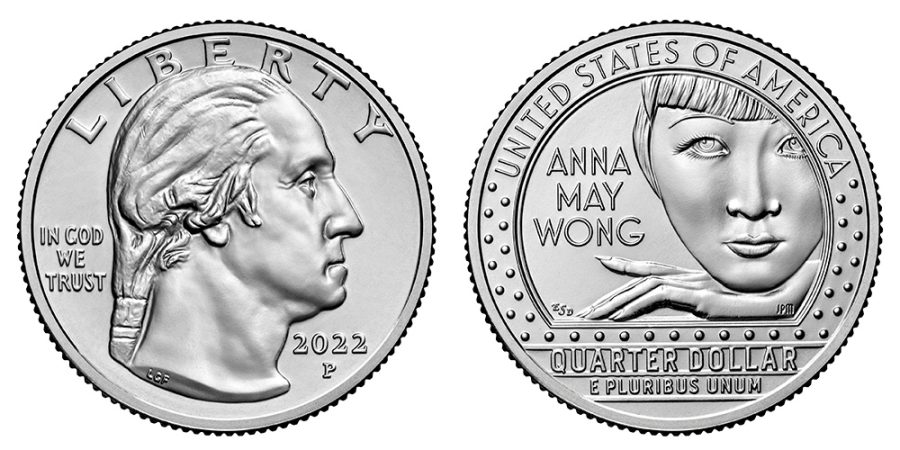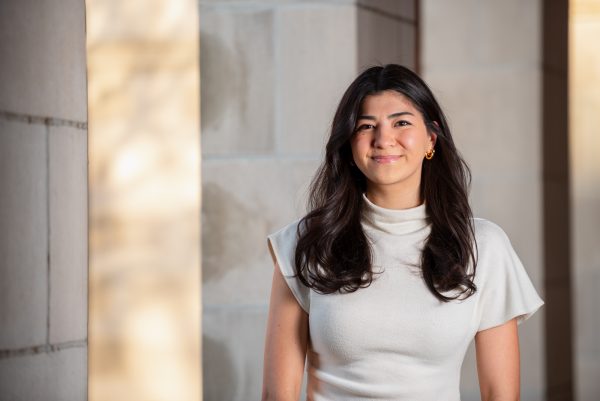Wong quarter breaks barriers
Anna May Wong is the first Asian American to be featured on U.S. currency
Courtesy of the U.S. Coin Book
Anna May Wong is the first Asian American to be featured on U.S. currency.
October 31, 2022
There is a new face featured on the quarter, which went into circulation on Monday, Oct. 24.
Anna May Wong is the first Asian American to be on U.S. currency. The tails side of the quarter depicts her face resting upon her hand — her name appears next to her. .
A Chinese American actress, Wong is widely considered to be the first Asian American movie star. In the 1920s, Wong rose to stardom and gained international recognition for her roles during a time when anti-Chinese sentiment and practices were normalized through yellowface and the Chinese Exclusion Act of 1882, which remained in place until 1943.
The Wong quarter is the fifth to be released in the American Women Quarters Program, which calls for five new coins each year from 2022 to 2025 that “[celebrate] the accomplishments and contributions made by women of the United States,” according to the U.S. Mint.
The coin was designed by Emily S. Damstra, who wanted to feature “the features that helped make her so compelling and memorable,” including her signature hair, narrow eyebrows, eyes and lips. Wong was often depicted with her hands posed elegantly near her face, so Damstra rested Wong’s chin on her hand, with one finger gently pointing to her name to “suggest she has been waiting for the kind of recognition that being on a United States coin might finally bring.”
“This quarter is designed to reflect the breadth and depth of accomplishments by Anna May Wong, who overcame challenges and obstacles she faced during her lifetime,” the director of the U.S. Mint, Ventris Gibson said.
Wong, born in 1905 in Los Angeles as a third-generation Chinese American, landed her first leading role at 17 in the 1922 silent film, “The Toll of the Sea.” But the roles offered to Wong were stereotypical and required her to embody problematic tropes such as the submissive lotus blossom or the sexually deviant dragon lady.
Wong’s identity as an Asian American woman limited her to roles such as the villain or self-sacrificing character. She famously referred to herself as “the actress who died a thousand deaths” because the plot called for her character to be killed off in every role she played.
Due to laws against interracial relationships and romances, Wong was unable to be cast in leading roles that required a romance with the leading male actors who were predominantly white. Unwilling to be relegated to stereotypical background roles, Wong moved to Europe, where she was able to play lead roles that catapulted her to global stardom.
When she returned to Hollywood, Wong was outspoken about the discrimination she faced. “I was so tired of the parts I had to play,” Wong said in 1933. “Why is it that the screen Chinese is nearly always the villain of the piece, and so cruel a villain? We are not like that.”
Wong used her fame to speak against depictions of Asian characters in the media in ways that had never been done before. Wong’s activism is impressive because she chose to embark on a lonely path, seeking to challenge an industry dominated by white people and resist the racist typecasting within it.
Wong helped pave the way for her fellow actors of color and was the first Asian American actress to receive a star on the Hollywood Walk of Fame in 1960.
The importance of meaningful representation in media has only become more apparent as we see the continued prevalence of anti-Asian rhetoric and violence in our country, especially since the COVID-19 pandemic.
The harmful stereotypes of today perpetuate the fetishization and dehumanization of Asian American women, mirroring the roles that were widely available for Wong to portray.
The hypersexualization that Wong experienced continues today, and has combined with the lack of positive media representation to create false ideas about Asian women. These negative stereotypes transcend crude fantasy and become a dangerous reality for so many of these women.
The next time you receive change, look for Anna May Wong on the quarter. She will be peering at you from under her signature bangs, imploring you to know her story so you may question the stereotypical portrayals you see on the screen and challenge the ways in which they manifest in our reality.














J Casey • Feb 27, 2023 at 11:15 am
Woke money. Wow!